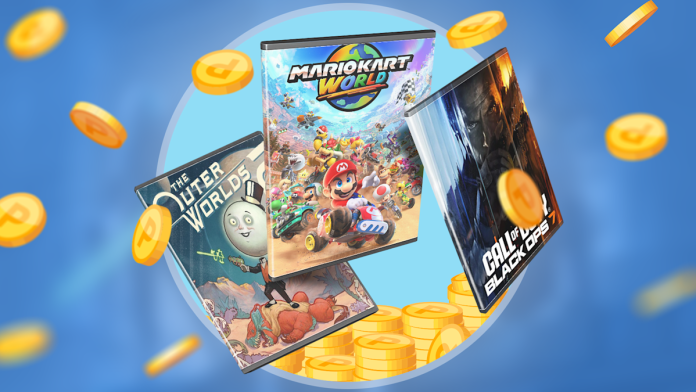Companies have slowly been hiking the prices of games from the time-honored $60 to $70 or even $80, eliciting much grumbling from gamers. However, games should probably cost more than that, and I’d still pay for them anyway.
Video Games Are Weirdly Inflation-Resistant
By the early 2000s, it was common to see newly-released games that cost between $40 and $60. Now, in the year 2025, it is still common to see games at that price.
The controversy surrounding the price hike of various AAA titles from major studios—either to $70 or $80—has sparked a furor among gamers.
However, game prices have been uncommonly stable for a very long time, and the reality is that games should probably cost more than $80 for a new title—a lot more.
According to the United States Bureau of Labor Statistics, $40 in January of 2000 is worth about $76 in June of 2025, and $60 works out to about $114.
That means that games should cost somewhere between $76 and $115 for a new title, and that is just if the cost had kept up with inflation. They certainly haven’t gotten cheaper to make.
It isn’t like other costs related to gaming have stayed constant either. Anyone that has tried to purchase a mid-range graphics card will have experienced the eye-watering costs. According to NVIDIA, when the GTX 1070, a workhorse, mid-range card, first debuted in 2016, the MSRP was about $380. The GTX 1070 Ti had an MSRP of $450.
By comparison, the 5070 and 5070 Ti have MSRPs of $550 and $750 respectively.
If prices had only been keeping pace with inflation, the RTX 5070 should cost around $520, and the RTX 5070 Ti should only cost around $600.
Consoles have been similarly affected.
Game Development Costs Have Skyrocketed
Games aren’t the same in 2025 as they were in 2000 either. Big titles (AAA games) now often have teams of hundreds or even thousands working on them, and development takes much longer.
Consider Grand Theft Auto VI as an example. We don’t know the specific details, but it has been in development for a minimum of 5 years as of 2025 and development and advertising costs are likely somewhere above 1 billion dollars.
Considering the enormous overhead associated with the game, it is a minor miracle that prices below $100 at release are even in the conversation at all.
After all, if Grand Theft Auto 2 had a development team of 2000 and a development and advertising budget of half a billion, it seems pretty unlikely it would have released at $40.
They’re One of the Best Investments for Entertainment
Even excluding the unexpectedly stable prices of games, they’re still a fantastic bargain if you want to stretch your dollar to maximize your entertainment.
The average movie theater ticket near me is about $17, which is probably close to the national average. Assuming that the average movie run time is about two hours, that works out to 7 minutes for every dollar spent.
Baldur’s Gate 3 cost $70 on release in 2023, and now hovers around $60. It is also really long. The main plot will take someone at least 50 hours, and more meandering play styles can easily double or even triple that.
I’m one of those people that likes to dive into every unexplored cave and chat up every random NPC in the tavern, so my play times tend to run long. Assuming it takes me 120 hours to beat Baldur’s Gate 3, that works out to 102 minutes of entertainment per dollar—more than 14x the value of a movie.
And that doesn’t even include replayability. Many games, especially RPGs, are driven by player choices, and can be very different depending on how you proceed. Multiple replays can easily double or triple the amount of time you put into a game, all for a fixed price.
For context, the shortest game I’ve played in the last ten years was Hellblade: Senua’s Sacrifice (which was excellent, by the way). I purchased it for $30 around release and took only about 11 hours to beat it. That still works out to 22 minutes of entertainment per dollar, about 3x better than a movie ticket. Even if Hellblade: Senua’s Sacrifice debuted today for a jaw-dropping $90, it would still be the same cost per minute of entertainment as a movie.
It isn’t just movies that fare poorly against games, either. Bowling, golf, an afternoon at an ice rink—all cost at least 10x more per minute of entertainment than an average-length video game.
Whether games cost $70, $80, or even $90, they’re still far less expensive than you would expect given inflation alone, and remain one of the best value propositions if you’re looking to keep yourself entertained.
